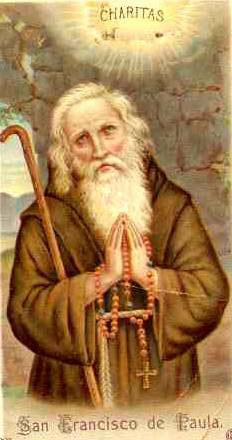Fossors
FREE Catholic Classes
(Latin fossores , fossarii from fodere , to dig).
Grave diggers in the Roman catacombs in the first three or four centuries of the Christian Era. The determination, from the first days of the Church, of the ecclesiastical authorities to inter the mortal remains of the faithful in cemeteries reserved exclusively to Christians, brought into existence the class of workmen known as fossors. The duties of the Christian fossor corresponded in a general way with those of the pagan vespillones , but whereas the latter were held in anything but esteem in pagan society, the fossors from an early date were ranked among the inferior clergy of the Church (Wieland, Ordines Minores, 1897), an excellent example of the elevating influence of Christianity on the lowest orders of society. An interesting literary reference to fossors, in their character of one of the orders of the inferior clergy, is found in the "Gesta apud Zenophilum", an appendix to the work of St. Optatus of Mileve against the Donatists. Speaking of the "house in which Christians assembled" at Cirta in the year 303, during the persecution of Diocletian, this writer enumerates first the higher orders of the clergy present, from the bishop to the subdeacons, and then mentions by name the fossors Januarius, Heraclus, Fructuosus, et ceteris fossoribus ("Opp. S. Optati", ed. C. Ziwsa, in "Corpus Script. Eccl. Lat.", Vienna, 1893, XXVI, 187). St. Jerome also (Ep. xlix) alludes to fossors as clerici , and a sixth-century chronicle edited by Cardinal Mai (Spicil. Rom., IX, 133) enumerates the orders of the clergy as ostiarius, fossorius, lector , etc. At first the fossors seem to have received no regular salary, but were paid by individuals for the work accomplished; with the organization of the Church, however, they appear to have been paid from the common treasury. In the fourth century the corporation of fossors were empowered to sell burial spaces, as we learn from inscriptions. For example, in the cemetery of St. Cyriacus two women bought from the fossor Quintus a bisomus , or double grave, retro sanctos (near a martyr's tomb ), and there are several other references to this practice. The corporation of fossors, there is good reason to believe, did not consist merely of the labourers who excavated the galleries of the catacombs ; it included also the artists who decorated the tombs, as appears from another allusion in the "Gesta apud Zenophilum" already cited. According to this authority two fossors were brought before the judge (inductis et adplicitis Victore Samsurici et Saturnino fossoribus ); when interrogated as to their calling, one replied that he was a fossor, the other that he was an antifex . The latter term at that period included the professions of painter and sculptor. Thus it would seem that this person who is generically referred to as a fossor is also an artist.
Among the representations of fossors in the catacombs the one best known, through Wiseman's "Fabiola", is that of the fossor Diogenes, discovered by Boldetti. The picture, which was seriously injured in an attempt to remove it from the wall, represents Diogenes with his pick over his right shoulder and a sack, probably containing his midday meal, on his left shoulder, while in his left hand he carries a staff with a light attached. The inscription reads: DIOGENES FOSSOR, IN PACE DEPOSITVS, OCTABV KALENDAS OCTOBRIS (the fossor Diogenes, interred in peace, the eighth day before the calends of October). The oldest fresco of a fossor, or rather of two fossors, dating from the latter half of the second century, is in one of the so-called Sacrament Chapel in the catacomb of St. Callistus. The figures are represented pointing toward three Eucharistic scenes, probably to indicate another of their duties, which was to exclude unauthorized persons from taking part in the liturgical celebrations held occasionally in the cemeteries in commemoration of martyrs. Representations of fossors are usually near the entrance of the subterranean cemeteries.
Join the Movement
When you sign up below, you don't just join an email list - you're joining an entire movement for Free world class Catholic education.

-

- Stations of the Cross
- Easter / Lent
- 5 Lenten Prayers
- Ash Wednesday
- Living Lent
- 7 Morning Prayers
- Mysteries of the Rosary
- Litany of the Bl. Virgin Mary
- Popular Saints
- Popular Prayers
- Female Saints
- Saint Feast Days by Month
- Pray the Rosary
Pope Francis’ April Prayer Intention: Using Technology to Strengthen Human Connections
Finding Peace Through Prayer in a World of Worry
Trump Administration Withholds Federal Grants from Planned Parenthood Over DEI and Civil Rights Concerns
Daily Catholic
 Daily Readings for Wednesday, April 02, 2025
Daily Readings for Wednesday, April 02, 2025 St. Francis of Paola: Saint of the Day for Wednesday, April 02, 2025
St. Francis of Paola: Saint of the Day for Wednesday, April 02, 2025 Prayer for God's Help in Daily Actions: Prayer of the Day for Friday, March 14, 2025
Prayer for God's Help in Daily Actions: Prayer of the Day for Friday, March 14, 2025 Daily Readings for Tuesday, April 01, 2025
Daily Readings for Tuesday, April 01, 2025 St. Hugh of Grenoble: Saint of the Day for Tuesday, April 01, 2025
St. Hugh of Grenoble: Saint of the Day for Tuesday, April 01, 2025- To Perceive Animals as God's Gifts: Prayer of the Day for Thursday, March 13, 2025
![]()
Copyright 2025 Catholic Online. All materials contained on this site, whether written, audible or visual are the exclusive property of Catholic Online and are protected under U.S. and International copyright laws, © Copyright 2025 Catholic Online. Any unauthorized use, without prior written consent of Catholic Online is strictly forbidden and prohibited.
Catholic Online is a Project of Your Catholic Voice Foundation, a Not-for-Profit Corporation. Your Catholic Voice Foundation has been granted a recognition of tax exemption under Section 501(c)(3) of the Internal Revenue Code. Federal Tax Identification Number: 81-0596847. Your gift is tax-deductible as allowed by law.


 Daily Readings for Wednesday, April 02, 2025
Daily Readings for Wednesday, April 02, 2025 St. Francis of Paola: Saint of the Day for Wednesday, April 02, 2025
St. Francis of Paola: Saint of the Day for Wednesday, April 02, 2025 Prayer for God's Help in Daily Actions: Prayer of the Day for Friday, March 14, 2025
Prayer for God's Help in Daily Actions: Prayer of the Day for Friday, March 14, 2025 St. Hugh of Grenoble: Saint of the Day for Tuesday, April 01, 2025
St. Hugh of Grenoble: Saint of the Day for Tuesday, April 01, 2025

